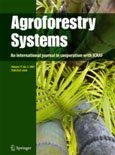In the tropics, the domestic water supply depends principally on ecosystem services, including the regulation and purification of water by humid, dense tropical forests. The Yangambi Biosphere Reserve (YBR) landscape is situated within such forests in the Democratic Republic of Congo (DRC). Surprisingly, given its proximity to the Congo River, the YBR is confronted with water issues. As part of its ecosystem function, the landscape is expected to reduce deterioration of water quality. However, environmental consequences are increasing due to conversion of its dense forest into other types of land use/land cover (LULC) in response to human activities. It is therefore important to check how the physicochemical quality parameters of water resources are influenced by landscape parameters—and to know if the population can adapt to this water vulnerability. To do this, we analyzed the watershed typology (including morphometric and LULC characteristics) and the physical and chemical parameters of water within the principal watershed’s rivers. We also analyzed data from surveys and the Yangambi meteorological station. We found that some landscape indices related to LULC significantly influence water quality deterioration in Yangambi. On average, each person in the Yangambi landscape uses 29–43 liters of water per day. Unfortunately, this falls short of World Health Organization standards regarding some parameters. The best fitted simple linear regression model explains the variation in pH as a function of edge density of perturbed forest, edge density of crop land and patch density of dense forest up to 94%, 92% and 90%, respectively. While many researchers have identified the consequences of climate change and human activities on these water resources, the population is not well-equipped to deal with them. These results suggest that water management policies should consider the specificities of the Yangambi landscape in order to develop better mitigation strategies for a rational management of water resources in the YBR in the context of climate change.
Download:
DOI:
https://doi.org/10.3390/land10020165
Altmetric score:
Dimensions Citation Count:

Publication year
2021
Authors
Chishugi, D.U.; Sonwa, D.J.; Kahindo, J.-M.; Itunda, D.; Chishugi, J.B.; Felix, F.L.; Sahani, M.
Language
English
Keywords
watershed management, climate change, land use change, deforestation, water quality, water availability
Geographic
Democratic Republic of the Congo
























